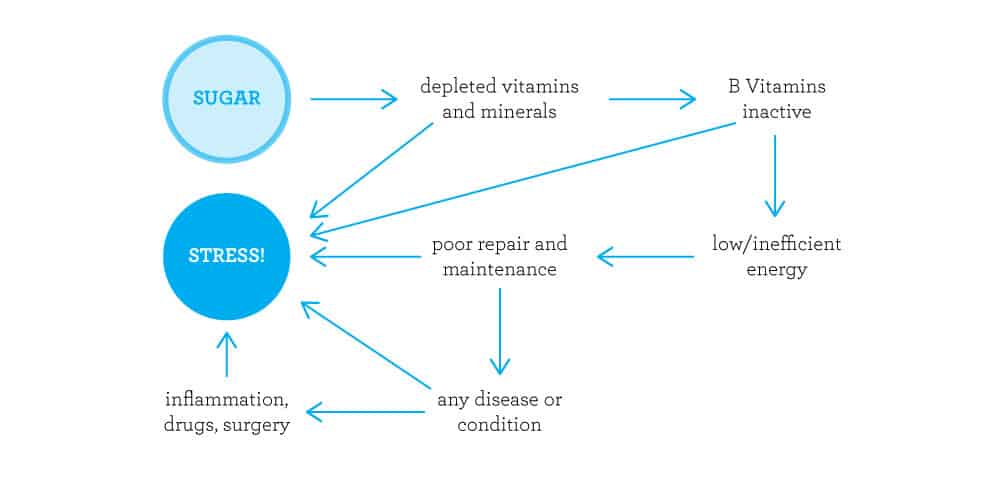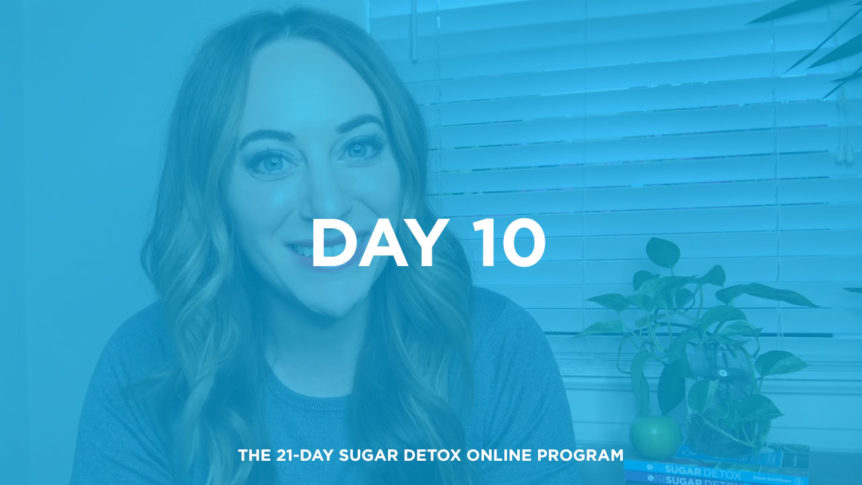What to Expect:
“I’m feeling like myself again and getting the swing of this!”
You may experience: If you had digestive issues such as gas and bloating, they’re clearing up. You’re getting into the swing of cooking, and you have collected a bunch of recipes to try.
Your best bet: Make some new shopping lists and try a new recipe! If you neglected shopping and food prep during week 2, get back into it now. If you were following the meal plan but realized your tastes are just different, plan some other meals for yourself!
Today's Lesson:
Nutrient density: Why real food matters more than calories
Eating whole, nutrient-dense sources of carbohydrates like vegetables, fruits, roots, and tubers enables you to make nutritional deposits into your body’s “energy bank account.” Sugar, however, which is empty of nutrients, asks your body for a withdrawal without making a deposit in return.
Let me explain what that means. To metabolize carbohydrates and turn them into energy, your body needs B vitamins and the minerals phosphorus, magnesium, iron, copper, manganese, zinc, and chromium. Bad carbs—refined, processed, and nutrient-poor—don’t contain those vitamins and minerals in naturally occurring forms. So to process those carbs, your body has to use nutrients it already has stored. In other words, you have to make a withdrawal from your energy bank account. Nutrients are being used up, and no new nutrients are being provided. While we do get energy from calories, in order to turn the calories into energy, we need nutrients for that process to happen. So, calories without nutrients will only get you so far in creating cellular energy.

Low nutrient density explains why a diet rich in bad carbs leaves you feeling tired and often depleted of energy. It’s also why you feel hungry more often—because your body is telling you to eat more food to get more nutrients! It doesn’t want you to eat more nutrient-poor bad carbs; it’s begging you to eat good stuff loaded with vitamins and minerals to satisfy that need for micronutrients at the cellular level. The problem is, what’s most readily available usually isn’t the good stuff—unless you plan ahead!
The Dish from Diane:
It’s popular right now to follow an eating plan that dictates the exact number of grams of fat, protein, and carbs going into your body each day. And while that approach does hold some merit in the grand scheme of things—we can’t escape the fact that, at some point, how much we eat does matter!—it certainly isn’t the whole story. In fact, I’d argue that while “counting macros” is suitable in the short term and is helpful for specific body fat manipulation goals, for longterm health and well-being (as well as a balanced state of mind and learning how to eat more intuitively), it tends to fail. Why? Well, when you get really hung up on the numbers, you lose the sense of self-reliance that’s necessary to sustain healthy habits in the long-term. The 21DSD is about learning to make better food choices based on nutrient density and tuning in to your body’s appetite cues, so you can eat what and how much your body needs, not what and how much a plan dictates. Inevitably, a rigid approach to long-term nutrition isn’t sustainable, so I want you to learn to make healthy choices in a balance that works for you more than I want you to count or measure anything specifically.
Today's Checklist:
- Post to social media using the hashtag #21DSD about your day 10 experience and share what you’ll use to replace nutrient-poor refined foods like bread or cereal.
For even more support, visit the Online Facebook Community!

